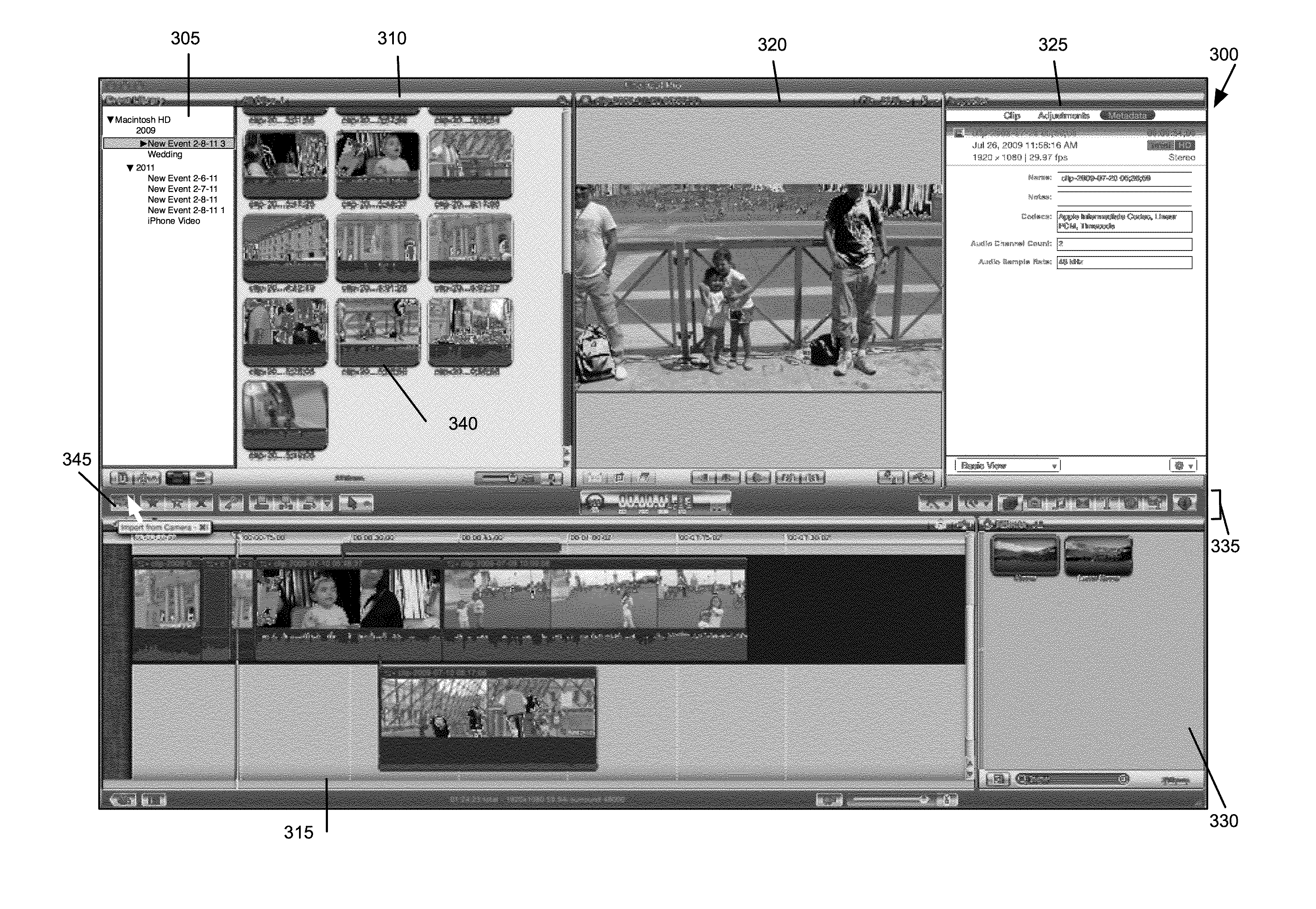Efficient Media Import
a technology of efficient media import and media import, applied in the field of efficient media import, can solve the problems of consuming a large amount of time and the extremely time-consuming process of importing video into the application, and achieve the effect of faster processing and better image quality
- Summary
- Abstract
- Description
- Claims
- Application Information
AI Technical Summary
Benefits of technology
Problems solved by technology
Method used
Image
Examples
Embodiment Construction
[0077]In the following detailed description of the invention, numerous details, examples, and embodiments of the invention are set forth and described. However, it will be clear and apparent to one skilled in the art that the invention is not limited to the embodiments set forth and that the invention may be practiced without some of the specific details and examples discussed.
[0078]Some embodiments of the invention provide a media-editing application that performs one or more destination operations on a media file (e.g., video files, audio files, etc.) in parallel upon import of the media file. Rather than performing fully separate processing for each operation, the media-editing application performs certain image preparation operations (e.g., disk read, decode, format conversions) only once whenever possible, then sends the same image data to the different destination operations.
[0079]FIG. 1 conceptually illustrates the software architecture of a media-editing system 100 of some e...
PUM
 Login to View More
Login to View More Abstract
Description
Claims
Application Information
 Login to View More
Login to View More - R&D
- Intellectual Property
- Life Sciences
- Materials
- Tech Scout
- Unparalleled Data Quality
- Higher Quality Content
- 60% Fewer Hallucinations
Browse by: Latest US Patents, China's latest patents, Technical Efficacy Thesaurus, Application Domain, Technology Topic, Popular Technical Reports.
© 2025 PatSnap. All rights reserved.Legal|Privacy policy|Modern Slavery Act Transparency Statement|Sitemap|About US| Contact US: help@patsnap.com



